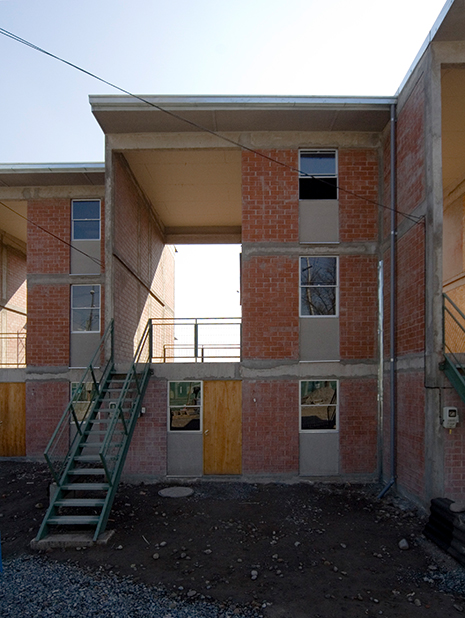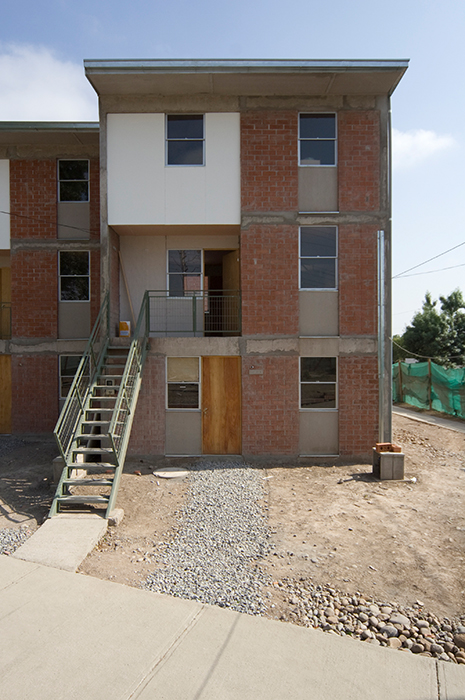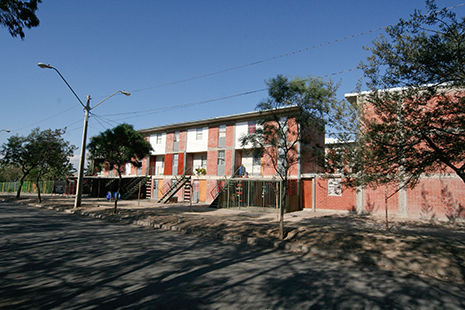Description
In 2005, following the success of the earlier Quinta Monroy Residential Development in Iquique, ELEMENTAL was commissioned by the government to design 30 houses in Lo Espejo, the poorest and most densely populated commune of Santiago’s metropolitan area, approximately 12 kilometres south of the city centre. The purpose of the project was to relocate 30 families which lived in an illegal settlement near the assigned site. Initially, the area of the site appeared to be sufficient to build comfortably the required number of houses. However, a restriction prohibited to build on a 10-metre fringe along the southernmost end of the site because it had been occupied by a sewage plant (now decommissioned).
Consequently, in order to reduce the total built area, the houses were packed closer to one another at the north end of the site, and the house typology of the previous project had to be slightly modified.
The houses were organised conventionally in three rows around the periphery of the site. On the ground level the houses occupy a 6 x 6-metre module with another 36-square-metre module left vacant at the back for future development. The upper level houses correspond with the typology of the previous project in Iquique, though a roof covers the whole 6 x 6-metre module in such a way that it forms a continuous plane linking each row of houses together.
Unlike the incremental project in Iquique – where all units can grow unto the adjacent vacant space – in Lo Espejo, only the upper level units can grow into the allocated gap. The lower units, on the other hand, can only expand onto the backyard. However, losing the backyard would cause significant ventilation and lighting problems. It could also cause legal disputes with the neighbours in the upper level. To prevent this from happening, it is necessary to regulate the development of the units by imposing controls which would somewhat contradict the idea of free appropriation of space by users. This limitation highlights the inability of a building typology, conceived for a particular site, to satisfy the conditions of another site and the needs of a different group of people. Only the continued study of this project over time, the monitoring of its changes, will provide clues to optimise the concept for future application.
In the same year, ELEMENTAL also built the Renca Housing Project, using a similar approach, but on a much larger scale.
 View of individual unit before occupation.
View of individual unit before occupation.
 View of individual unit after occupation.
View of individual unit after occupation.
 Overall view two months after occupation.
Overall view two months after occupation.
Originally published in: Felipe Hernández, Beyond Modernist Masters. Contemporary Architecture in Latin America, Birkhäuser, 2009.